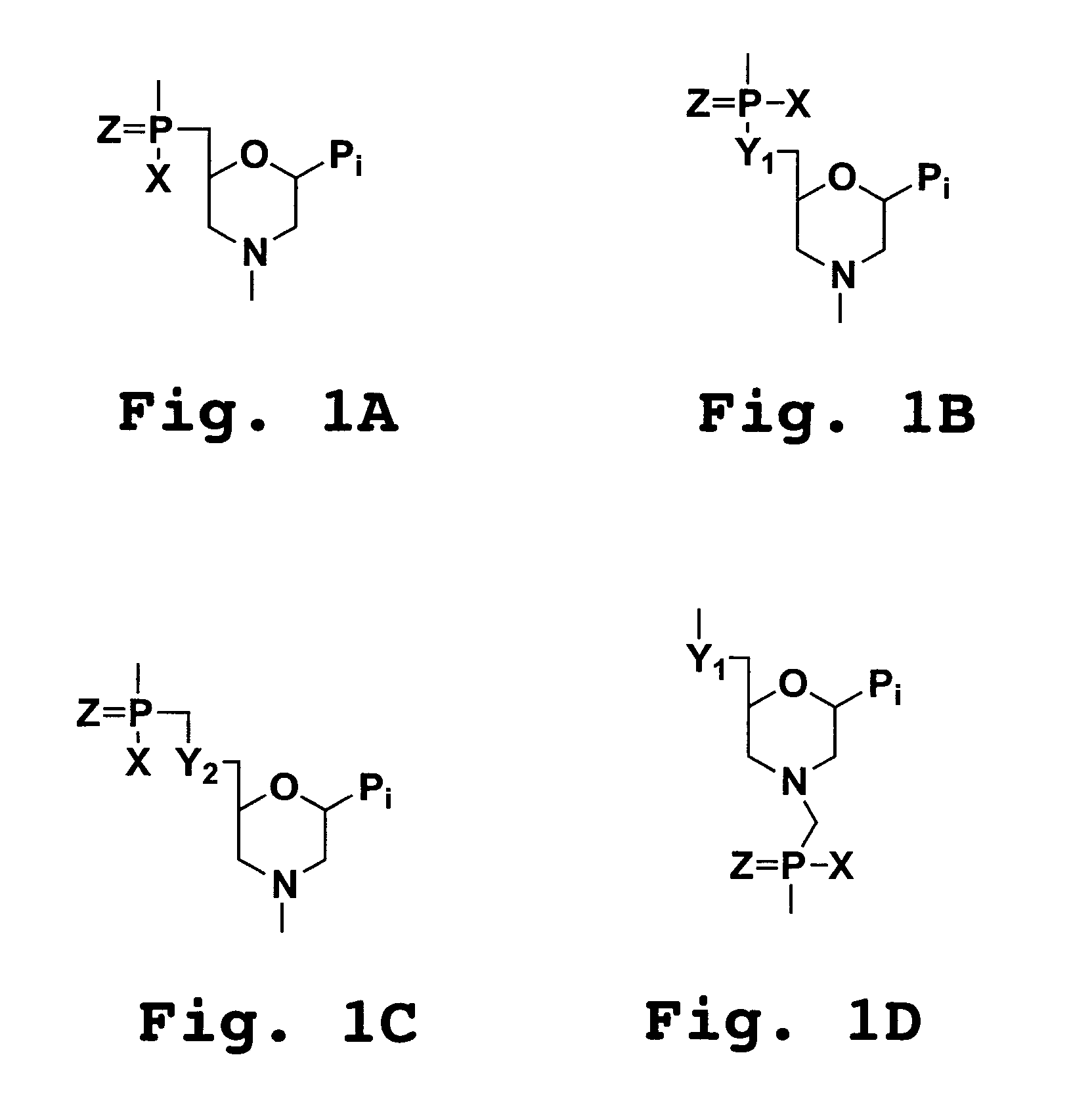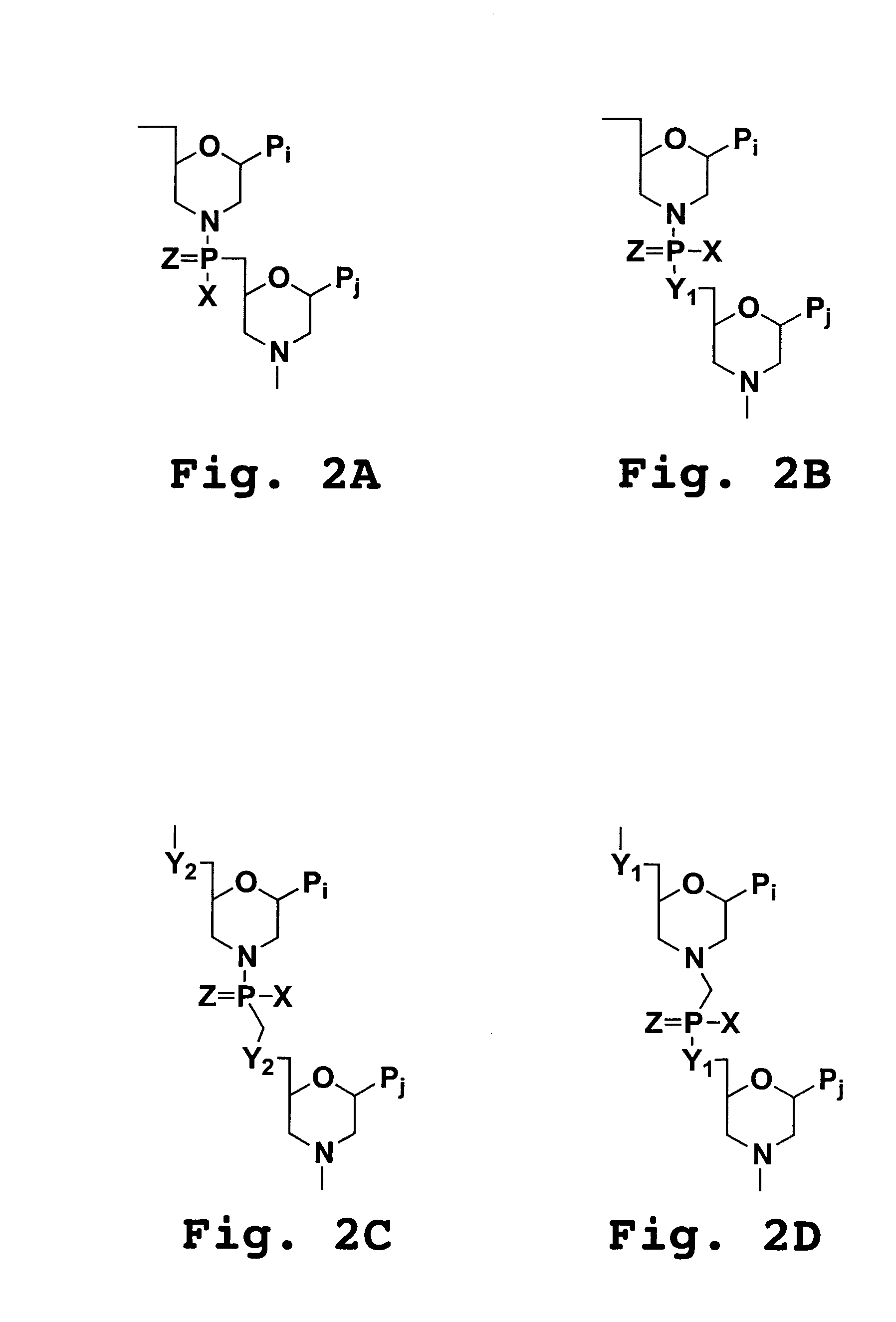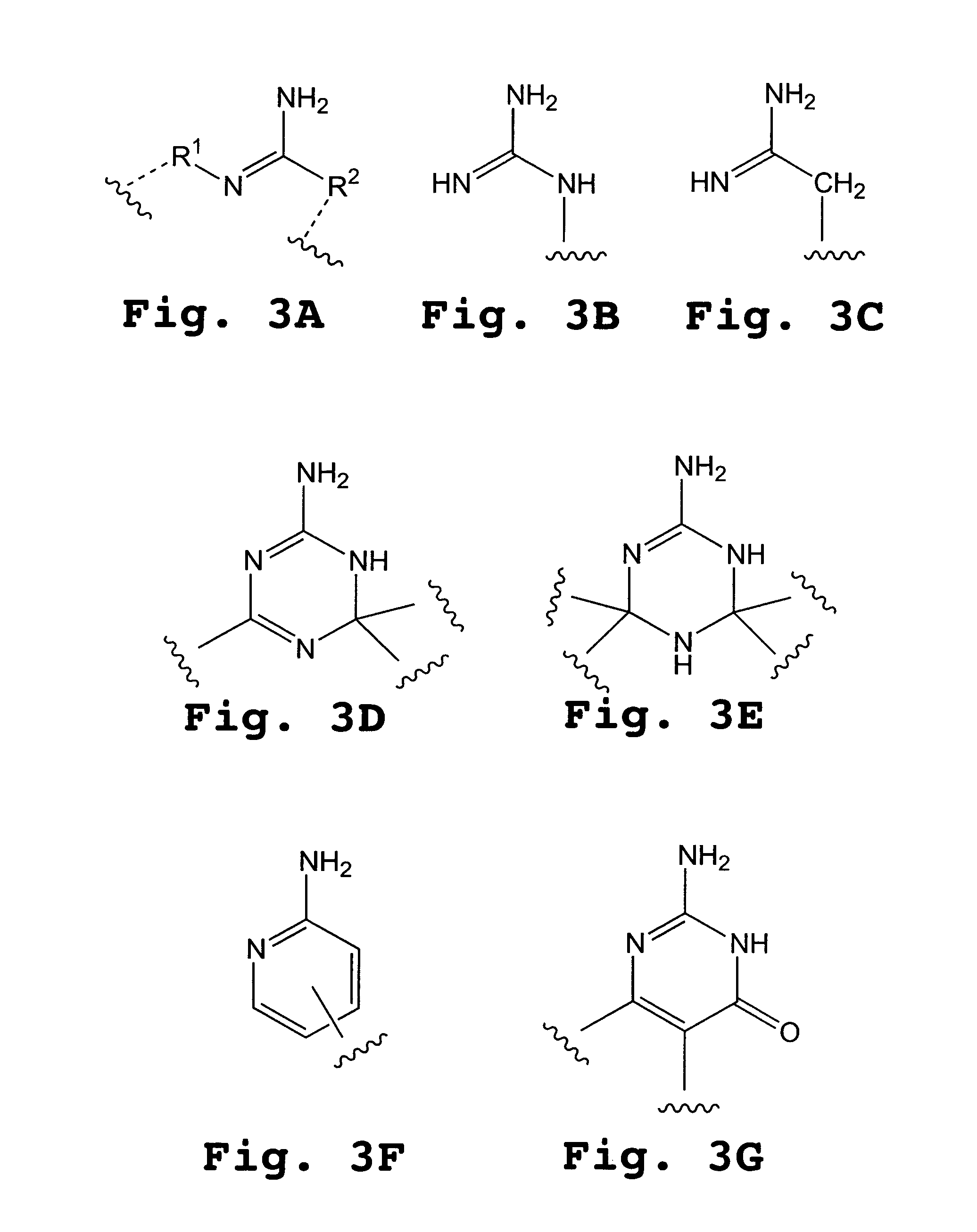Compositions for enhancing transport of molecules into cells
a technology of molecules and compositions, applied in the direction of peptides, peptide sources, peptide/protein ingredients, etc., to achieve the effect of enhancing the transport of agents
- Summary
- Abstract
- Description
- Claims
- Application Information
AI Technical Summary
Benefits of technology
Problems solved by technology
Method used
Image
Examples
example 1
3′-Fluoresceination of a PMO
[0259]A protected and activated carboxyfluorescein, e.g. 6-carboxyfluorescein dipivalate N-hydroxysuccinimide ester, commercially available from Berry & Associates, Inc. (Dexter, Mich.), was dissolved in NMP (0.05M), and the solution was added to a PMO synthesis column (see “Morpholino synthesis”, above) in sufficient volume to cover the resin. The mixture was incubated at 45° C. for 20 minutes, then the column was drained and a second similar portion of protected and activated carboxyfluorescein was added to the column and incubated at 45° C. for 60 minutes. The column was drained and washed with NMP, and the oligomer was cleaved from the resin using 1 ml of cleavage solution (0.1M dithiothreitol in NMP containing 10% triethylamine). The resin was washed with 300 μl of cleavage solution three times, immediately followed by addition of 4 ml of concentrated ammonia hydroxide and 16 hours incubation at 45° C. to remove base protecting groups. The morpholino...
example 2
Peptide Synthesis and Attachment of Transport Peptide
[0260]Peptides were synthesized by Fmoc Solid Phase Peptide Synthesis, referred to herein as SPPS. A p-benzyloxybenzyl alcohol resin was used for synthesis of peptides with a C-terminal acid, while a Rink Amide MBHA resin was used for peptide amides. Both resins are available from Novabiochem (San Diego, Calif.). A typical synthesis cycle began with N-terminal deprotection via 20% piperidine. Then, N-α-Fmoc-protected amino acids were coupled to the growing peptide chain by activation with 2-(1H-benzotriazole-1-yl)-1,1,3,3-tetramethyluronium hexafluorophosphate (HBTU) in the presence of N,N-diisopropylethylamine (DIEA). Arginine side chains were protected with the 2,2,4,6,7-pentamethyldihydrobenzofuran-5-sulfonyl (Pbf) protecting group, cysteine with trityl, and lysine side chains with t-butoxycarbonyl (Boc). The cycle was repeated until all of the amino acids were added, in a carboxy-to-amino direction, in the desired sequence. Cl...
example 3
3′-Acetylation of PMO and 5′ Attachment of Transport Peptide
[0265]Acetic anhydride (0.1 M), dissolved in N-methyl-2-pyrrolidinone (NMP) containing 1% N-ethyl morpholine (v / v), was added to a PMO synthesis product while the oligomer was still attached to the synthesis resin. After 90 minutes at room temperature, the oligomer was washed with NMP, cleaved from the synthesis resin, and worked up as described above. The product was analyzed by MALDI-TOF mass spectrometry (MALDI-TOF) and HPLC. The desired product included a 3′-acetyl group and was capped at the 5′-end with piperazine, which was used for conjugation, as described below and shown in FIG. 4A.
[0266]The linker reagent, N-(γ-maleimidobutyryloxy)succinimide ester (GMBS), was dissolved in 50 μl of DMSO, and the solution was added to the oligomer (2-5 mM) in sodium phosphate buffer (50 mM, pH 7.2) at a 1:2 PMO / GMBS molar ratio. The mixture was stirred at room temperature in the dark for 30 minutes, and the product was precipitated...
PUM
| Property | Measurement | Unit |
|---|---|---|
| Transport properties | aaaaa | aaaaa |
| Inhibition | aaaaa | aaaaa |
Abstract
Description
Claims
Application Information
 Login to View More
Login to View More - R&D
- Intellectual Property
- Life Sciences
- Materials
- Tech Scout
- Unparalleled Data Quality
- Higher Quality Content
- 60% Fewer Hallucinations
Browse by: Latest US Patents, China's latest patents, Technical Efficacy Thesaurus, Application Domain, Technology Topic, Popular Technical Reports.
© 2025 PatSnap. All rights reserved.Legal|Privacy policy|Modern Slavery Act Transparency Statement|Sitemap|About US| Contact US: help@patsnap.com



